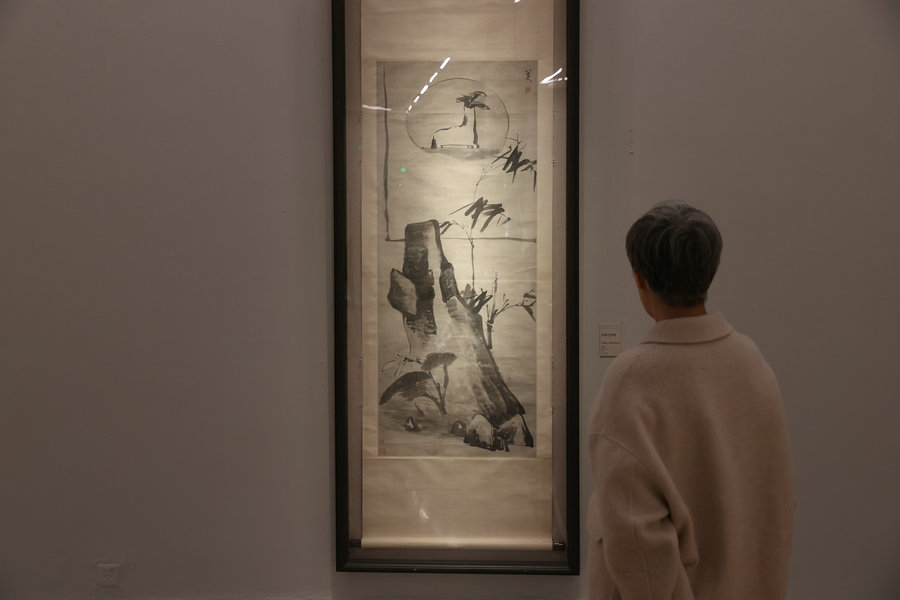

Born Li Shutong, he had achieved a great deal in the fields of music, painting, calligraphy and theater, before becoming a monk in 1918. In the following years he focused on calligraphy, and his writing style evolved — the characters became elongated. His understanding of calligraphy was explained in a letter to a friend in 1941, in which Hongyi wrote: "The characters I write are to show simplicity, serenity and a request of otherworldly feeling."
A rare view of Hongyi's last calligraphic piece, beixin jiaoji, is on offer at an ongoing exhibition, Purity and Glory, which marks the 70th anniversary of The Buddhist Association of China. Held at the National Art Museum of China in Beijing until Tuesday, it is also a diverse presentation of the integration of art with Buddhism to communicate the essence of Chinese cultural traditions and values.
On show are more than 100 paintings, calligraphic works and sculptures made by followers of Buddhism, or by artists with a theme of Buddhism, such as copies of the murals of Dunhuang grottoes in Gansu province.